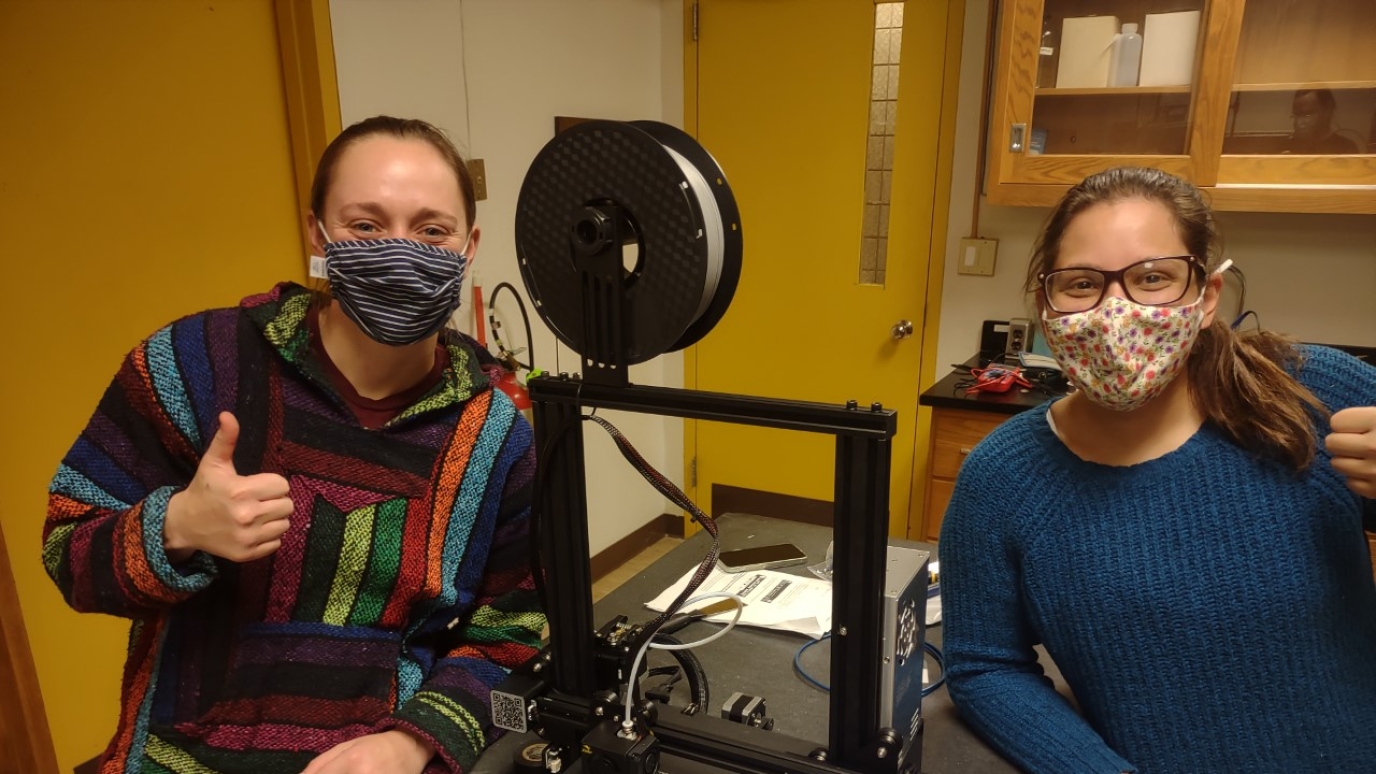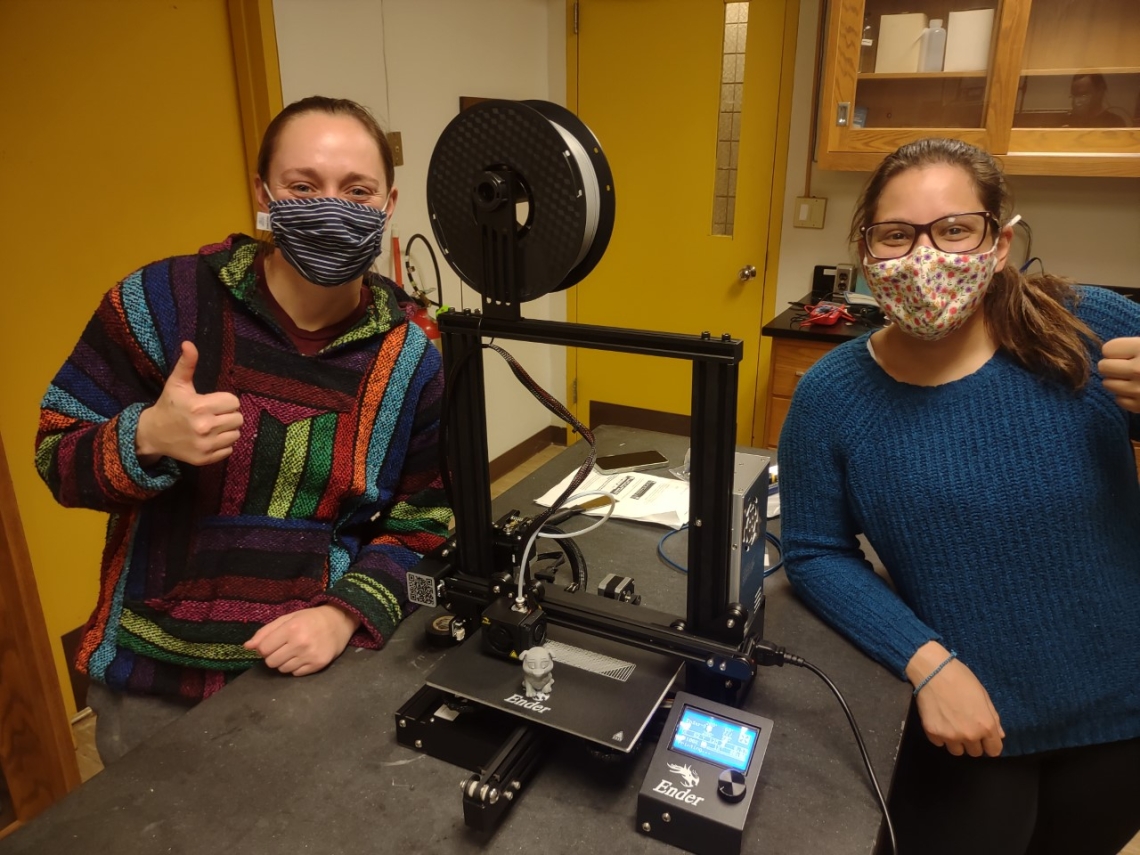
“Old Westbury students deserve access to the field of Physics,” says Assistant Professor of Physics John Estes. In Fall 2022, The Chemistry and Physics department at Old Westbury began offering students the opportunity to complete a Bachelor of Science degree in Physics. In Estes’ words, “It’s a completely new program. Before the new major started, we offered a Physics minor. That was a success, and many of the students who completed the minor wished they had had more opportunities to complete coursework in physics.” Assistant Professor of Physics Matthew Lippert also played an instrumental role in establishing the new major. “It was rewarding to design a new academic program from the ground up. We collaborated extensively with our colleagues in Math and Chemistry. Since Chemistry and Physics are a joint department, some of our advanced classes will be combined offerings that can be used toward a degree in either Chemistry or Physics.”
Estes notes that studying Physics can lead to a wide range of career paths. “It’s a broad discipline that gives students computational and analytic skills that can be transferred into many different fields.” According to Lippert, “We organized the major into different concentrations, each with a specific career path in mind. For example, there is a concentration in Quantitative Finance. Many professionals in finance and banking earned degrees in physics. We offer a health sciences concentration. Students often assume that majoring in Biology is the best way to prepare for a career in health care. However, studying Physics is also an excellent option. We also have an applied technology concentration. An undergraduate degree in physics can be a great stepping stone to a career in computer science or engineering.”
One option the department would like to offer is a science education concentration. They are currently working collaboratively with the School of Education to bring the idea to fruition. Estes notes that a number of his students have told him they want to pursue careers in education. He says, “I’m always happy to hear that students are interested in teaching since there’s a great need for high school physics teachers.”
Participating in scientific research is an invaluable part of studying physics. In Lippert’s words, “Laboratory research allows students to gain knowledge and skills above and beyond what they learn in the classroom.” Old Westbury’s small size makes it easier for students to have close contact with faculty and become involved in their work. In order to provide more opportunities for students, the college partners with other research facilities. Old Westbury has worked extensively with the Brookhaven National Laboratory. Lippert refers to the facility as a “natural partner.” Brookhaven Lab is a multidisciplinary laboratory primarily supported by the US Department of Energy’s Office of Science with seven Nobel Prize-winning Discoveries. Among Brookhaven Lab’s current initiatives are nuclear science, energy science, data science, particle physics, accelerator science and technology, quantitative plant science and quantum information science. Lippert notes that Brookhaven Laboratory is drawn to Old Westbury because of our diverse student body. “We have many students from cultural backgrounds that are under-represented in the physical sciences,” Lippert says.
Estes frequently encourages students to apply for Brookhaven’s Science Undergraduate Laboratory Internship program each summer. Another collaborative project with Brookhaven National Laboratory is an application for a RENEW (Reaching a New Energy Sciences Workforce) grant from the U.S. Department of Energy. The intent is to create a lasting research program in physics for our students and to provide our students opportunities to experience and work at a world-class national laboratory. The Department of Chemistry and Physics is also planning to have students visit the laboratory so they can see experiments firsthand. Estes and Lippert are also working to arrange a series of on-campus guest lectures by Brookhaven National Lab researchers.
Lippert observes that Physics is a field that has historically been dominated by white men. In his words, “The field recognizes that working towards diversity is a pressing issue. We haven’t made as much progress toward that goal as in other areas of science. Efforts to remediate the situation are getting more attention and funding.” For Lippert, the opportunity to get underrepresented students interested in Physics is one of the most rewarding aspects of his work at Old Westbury. To help students succeed, the department works to foster a sense of community and support. One of Lippert’s ongoing projects is to build a peer mentor program. “Upper-division students and recent graduates are the best ambassadors we have to get newer students interested in the field.” Estes also believes that support is an important factor in student success. “Study groups and a support system are vital for STEM students. Doing problems together and comparing thought processes with other students is invaluable.”
Both Estes and Lippert agree that involving students in their research is one of the most rewarding parts of being a professor. Lippert received a National Science Foundation grant that allowed him to include Alice Alonso (Biology, Class of 2022) and Najwa Pierre (Biology, Class of 2022) in his work researching neutron stars. As Lippert explains, “Neutron stars are large stars reaching the end of their lifespan.” Students used structure and gravity equations to model the materials inside of a neutron star. Estes has been working with students to build a photogate, which is a piece of equipment that measures the speed and acceleration of a moving object. Estes’ goal is to use off-the-shelf parts to build a photogate inexpensively and create a design that could be used by other physics departments. In the Spring of 2022, Gabriella Anzalone (Biology, Class of 2022) and Shannon Myles (Adolescent Education – Math, Class of 2022) helped Estes design and build housing for the electronic components.
Estes, Lippert and the rest of the Chemistry and Physics department should be applauded for making the field of physics available to Old Westbury students. Thanks to their efforts to create a supportive and engaging academic program, our students can have another path toward becoming researchers, educators, or professionals in the physical sciences.
Written by Jon Kleinman

